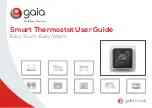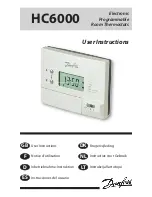
-
44
-
and take the temperature of the sticker. Afterwards, determine the temperature of the adjacent area on
the measuring object and adjust the emissivity according to the value of the temperature of the sticker.
► Cove a part of the surface of the measuring object with a black, flat paint with an emissivity of 0,98. Adjust
the emissivity of your infrared thermometer to 0,98 and take the temperature of the colored surface.
Afterwards, determine the temperature of a directly adjacent area and modify the emissivity until the
measured value corresponds to the temperature of the colored surface.
CAUTION: On all three methods the object temperature must be different from ambient temperature.
10.3 Characteristic Emissivities
In case none of the methods mentioned above help to determine the emissivity you may use the emissivity
tables
►Appendix A – Emissivity Table Metals
and
Appendix B
– Emissivity Table Non Metals
. These
are average values, only. The actual emissivity of a material depends on the following factors:
temperature
measuring angle
geometry of the surface
thickness of the material
constitution of the surface (polished, oxidized, rough, sandblast)
spectral range of the measurement
transmissivity (e.g. with thin films)
Summary of Contents for CSlaser 2MH
Page 1: ...Operator s Manual optris CSlaser LT hs LT 2M G5 Infrared thermometer...
Page 23: ...Technical Data 23 G5HF Optics CF4 D S focus distance 45 1 10mm 450mm D S far field 15 1...
Page 49: ...Appendix D Declaration of Conformity 49 Appendix D Declaration of Conformity...
Page 50: ...optris CSlaser MA E2018 12 A...







































